10/12 3:53-5:05pm 73˚F, partly cloudy
The weather was very nice for me to do my sit-spot journaling. I prefer this temperature with a breeze and clouds blocking the sun from shining directly into my eyes. I was quite comfortable in my chair. The sky was kind of dark in the Northeast maybe due to a storm occurring or about to occur in that area. I heard the faint sound of crickets chirping. I heard very few birds in the beginning and did not see any at all. The bird calls I did hear seemed to be coming from the south. My dad was using the shop-vac(uum) in the garage because he was cleaning his car. That noise did not last long, but I think that may be the reason for the lack of birds in the beginning, because when I could no longer here him using the vacuum, birds came out of the woodworks. First, a robin flew to the bird feeder, followed by a female cardinal. The cardinal was clearly female due to her brownish dull color, reddish-orange bill, and pointed feathers on her head. She sat on the bird feeder for about two minutes not eating, just looking all around herself in quick, jerky motions. This made me think about the adaptive advantages of being able to move the head so quickly. This behavioral advantage probably developed to keep an eye out for approaching predators. After evaluating her surroundings thoroughly, she then began to eat some seeds, making loud, cracking noises. The adaptation of the thick, sturdy bill arose due to the main food source being seeds and nuts. Included is a picture of the female cardinal.
After the female cardinal, a couple finches approached then left the feeder. Then, I noticed a couple of birds sitting far apart on the neighbor’s chain-link fence at the back of our yard. One was a bluebird, and I could not tell what species the other bird was. They bluebird flew to sit closer to the unknown species on the fence. Two blue jays sat on another fence then flew to the ground and began pecking, I’m assuming in search of food. One blue jay flew away, but the other stuck around for a while looking for food on the ground. When the wind began to pick up, they flew away. A male cardinal approached a few minutes later and began eating seeds from the feeder. I knew he was male because of his vibrant red coloration. I included a photo of him as well. Seeing both a male and female within 30 minutes of each other made me wonder if they had mated before and what time of year cardinals mate. Do all these birds I saw stay within a few-mile radius, meaning the same ‘group’ of birds lives in this community, or are they different birds I see daily, just the same species? Do cardinals or blue jays migrate? Amongst this pondering, motion to my right caught my attention. We have a bird bath on the patio with little water. A blue jay was hopping around in the bird bath. It stayed for a short time, then a bluebird followed and spent longer sitting on the edge of the bird bath. I was lucky enough to get a photo of it. Lastly, in my 15 minutes of tuning in, I realized that the red maples tree in the back left corner of the yard is changing colors much more slowly than a different maple tree, not sure what kind, in the back right corner of the yard. My dad said it was a sugar maple. (He also said the other tree was a sugar maple, and it turned out to be a red maple…I’m not sure if he’s reliable.) I included pictures for comparison.
Since one of the changes I noticed since my last sit-spot journaling was new dark spots on the leaves, I chose the spider I found on one of the leaves as the invertebrate to watch. First, I wanted to talk about the dark spots on the leaves. The tree’s overall appearance from afar has not changed since my last journaling. However, when looking at several leaves up close, there are new black/brown spots on them. There are also small holes lined with brown. I’m not sure what caused this, but it occurred to me that perhaps insects and spiders are eating the leaves. The leaves’ appearance changed so much since my last journaling that I don’t think this is the answer. Maybe this is part of the autumnal process of leaves, beginning to decompose before they have even changed color or detached from the tree. Back to the invertebrate, this spider was about ¼ the size of a dime. At first glance, the spider looked green, but when I looked more closely, the spider was a white translucent with specs of tan. I researched spiders that might live on tree leaves, and none of them matched this description. Below, I posted a picture of this invertebrate. I didn’t catch this at first, but there was a cotton-like web woven toward the back of the leaf where it attaches to the tree at the petiole. My best guess based on the size of the web and its location is that this little spider is responsible for it. The fact that the web had such a loose cotton look made me think that the spider wove it to lay eggs. It certainly does not look like the type of web that could catch any prey.
With respect to water’s role in this mini ecosystem, I think that deep ground water is responsible for sustaining this tree. Areas of southwestern Virginia have been in a drought recently, and I’m curious to see if this lack of water will affect the rate at which leaves fall from the tree as well as the leaves’ decomposition rate. The red maple tree is about 30 feet tall. The leaves at the top need water to photosynthesize, so, like many plants, the tree relies on root pressure and water’s cohesive property in order to draw water in a chain of molecules all the way up to the top. Transpiration keeps pulling molecules of water up to replace the ones that evaporated during the stomata opening to release oxygen and take in carbon dioxide. Because the soil in this area of southwestern Virginia is clay soil, this makes getting water even more difficult for plants. Clay has a very high field capacity, meaning it can hold onto water well since the particles are so small and allow water to sneak in between the clay molecules. I would think this is advantageous during a drought since the clay is not readily willing to give up the water it retains. Osmosis would have to play a role here as well with an area of high concentration of water, the clay, diffusing to an area of low concentration, the roots.
Overall, this sit-spot experience was my best so far because of the nice weather and the abundance of birds. I added bird seed to the feeder first thing when I came outside to journal and am certainly glad I did because I am not sure the bird activity would have been as heavy, which made for good observations. I will have to ask my dad if he still has binoculars because I sit far enough away from the red maple tree and bird feeder that I can’t see the birds as clearly as I would like. I found myself wishing I had binoculars several times to be able to describe certain birds I could not identify to research them and see if I could find out their species. I hope to see more change in the tree’s leaves the next time I journal. Those leaves need to turn red!
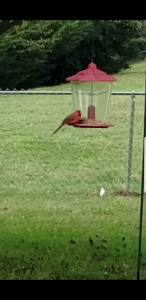
Male Cardinal
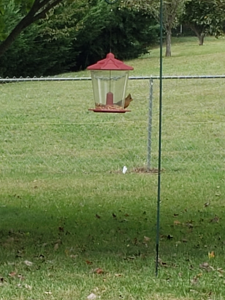
Female Cardinal
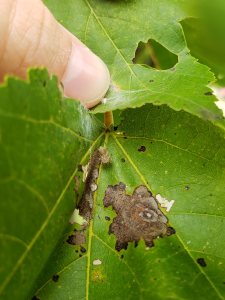
Spider, Web, and Dark Spots on Leaf
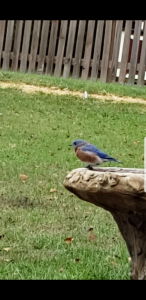
Bluebird
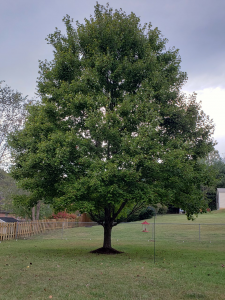
Red Maple Tree

Possible Sugar Maple Tree


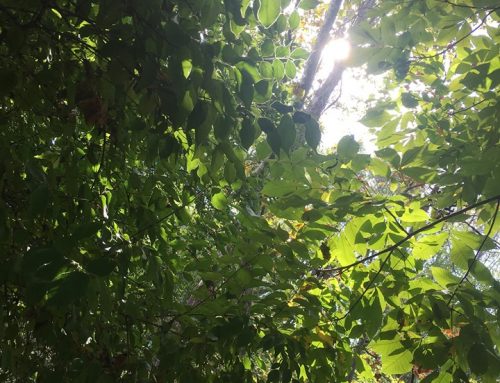
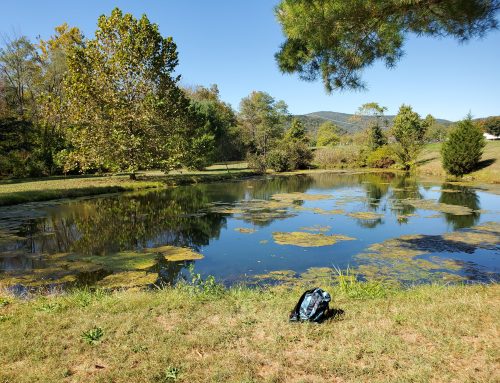
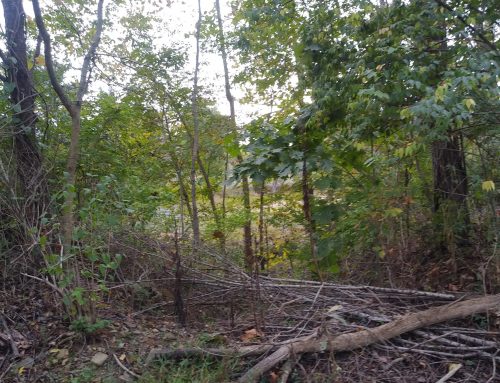
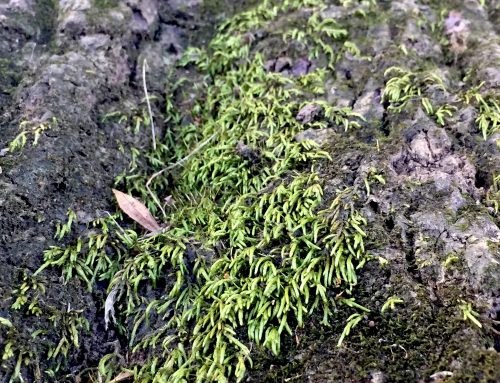
Nice details – and you found the tiniest of spiders!
I wish I knew what bird the bluebird was sitting with! Your blog focuses on lots of key ecological concepts, I can really tell you’re paying attention/understanding the material in class. So glad you’re taking interest in the birds, I will be glad to help you identify any in the future. You should download the Merlin Bird ID app!